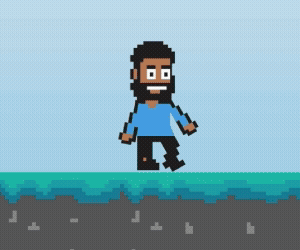Healthcare has always been a curious blend of cutting-edge science and surprisingly analogue processes. While researchers have mastered heart transplants and gene therapy, many hospitals still rely on fax machines and beepers. But this contradiction is rapidly dissolving as digital innovation finally catches up with medical ambition.
The transformation is fundamentally about reimagining how care is delivered, monitored, and experienced. From AI-powered customer service in private healthcare to augmented reality guiding emergency responders, technology is addressing some of healthcare’s most persistent challenges: accessibility, efficiency, and personalisation.
What makes this wave of innovation particularly compelling is its human-centred approach. Rather than imposing technology for technology’s sake, these advances are born from real-world problems and shaped by the people who will ultimately use them.
The following case studies showcase six distinct examples of how healthtech is transforming different aspects of the patient journey. Together, they paint a picture of an industry experiencing rapid evolution, one where the boundaries between physical and digital care are increasingly blurred, and where technology serves not as a replacement for human touch, but as an amplifier of doctor’s compassion and expertise.
AI Automation Transforming Customer Care at SimplyHealth
SimplyHealth’s digital transformation journey illustrates how AI can revolutionise private healthcare delivery without losing the human touch. As the UK’s private healthcare market grows at 6.1% annually amid NHS pressures, the 150-year-old company recognised it needed to modernise rapidly to serve its ambitious goal of reaching 10 million subscribers.
The transformation centred on Salesforce’s Einstein AI platform, which now handles 40% of all customer calls and has slashed email response times from 12 minutes to just one minute. But the real breakthrough came with automated claims processing.
By calculating the cost of poor customer experiences and setting automatic approval thresholds below that figure, SimplyHealth created a system that puts money back in customers’ pockets on day one.
The results speak volumes: 99% customer satisfaction with claims procedures, and complaints dropping from 600 in January 2023 to just 24 by 2024. The AI allows the company to save around 95 hours a week in efficiency, handling “boring work” that can be dealt with by technology. This approach has enabled 24/7 service availability while maintaining the personal touch that healthcare demands.
Chief customer officer Claudia Nicholls emphasises that AI implementation isn’t about “deflection” but resolution, helping people get the care they need when they need it. With WhatsApp integration on the horizon and plans for 50-60% of queries to be AI-resolved within two years, SimplyHealth demonstrates how thoughtful technology adoption from customer’s viewpoint can scale compassionate care.
AR and Sensors: Transforming Emergency Healthcare Response
Philips chief medical officer Atul Gupta paints a compelling picture of emergency healthcare’s future: imagine a cardiac arrest victim receiving life-saving guidance through AR glasses that connect bystanders directly to emergency services. This isn’t science fiction but a tangible application of augmented reality technology already in development.
The AR-powered defibrillator system would allow emergency services to see through a responder’s eyes, providing real-time guidance on patch placement, compression techniques, and heart rhythm analysis. Paramedics in ambulances could monitor the situation remotely while navigating to the scene, creating a seamless chain of care that begins the moment help is requested.
Beyond emergency response, Gupta talks about the potential of developing camera-based vital sign monitoring for hospital waiting rooms. Existing security cameras enhanced with sensing technology could monitor temperature and vital signs from a distance, automatically flagging patients requiring urgent attention. This addresses the critical challenge of effective triage in overcrowded emergency departments.
The technology extends to home-based care, where midwives could perform ultrasounds in patients’ homes with virtual guidance from remote experts. Photorealistic ultrasound images enhanced with AR could even allow distant grandparents to virtually “hold” their unborn grandchildren. In paediatric care, AR animations like “Ollie the elephant” help children understand and prepare for MRI scans, reducing anxiety through interactive storytelling.
Digital Twins: Virtual Hearts and Organs Transforming Patient Care
When Dr. Steve Levine’s daughter was born with a congenital heart defect, the industrial simulation expert saw an opportunity to apply Dassault Systèmes’ crash-testing expertise to medicine. The result is the Living Heart Project, a decade-long initiative creating digital twins of human organs that’s already saving lives at institutions like Boston Children’s Hospital.
The project utilizes Dassault’s 40 years of experience creating virtual twins for Boeing aircraft and automotive crash tests, applying the same collaborative modelling principles to human anatomy. Over 100 cardiovascular specialists and 30 member organisations contribute data to create highly accurate virtual models that can reproduce conditions and test treatment options before touching a patient.
Boston Children’s Hospital has used the platform for 500 patients over three years, with procedures now funded through patient charges after proving cost-effectiveness through reduced rehospitalisations. The FDA has partnered with the project since 2014, using digital twins to test medical devices including pacemaker leads, demonstrating the technology’s regulatory acceptance.
The ambition extends beyond hearts to complete human body mapping. The Living Brain project is underway, with early applications helping locate brain lesions in epilepsy patients, reducing surgery time from two hours to 20 minutes.
A liver project focuses on anti-cancer drug toxicity, potentially revolutionising how treatments are personalised. During the pandemic, a digital lung helped understand why respirators sometimes hindered rather than helped COVID patients, informing next-generation device design.
Virtual Wards: Delivering Hospital-Level Care to Patients at Home
The NHS’s virtual ward programme represents a paradigm shift from reactive to proactive healthcare, using digital monitoring to deliver hospital-level care in patients’ homes. With 83% of patients avoiding hospital admissions through virtual wards, this technology addresses two critical challenges: overcrowded hospitals and the preference for home-based recovery.
Virtual wards combine the physical, dedicated office spaces where clinical teams monitor patients, with the digital through internet-connected monitoring kits. These devices track heart rates, oxygen levels, temperature, and blood pressure, sending real-time data to nursing teams who can intervene immediately when concerning changes occur.
The case of a Parkinson’s patient whose temperature spike alerted nurses to sepsis demonstrates the life-saving potential of continuous monitoring.
Since May 2022, the programme has doubled in size, with over 340 virtual wards across England treating around 20,000 patients monthly. The expansion includes innovative trials with portable X-rays and ultrasounds, pushing the boundaries of what constitutes “hospital-level” care.
Director Stephanie Somerville emphasises that virtual wards “can deliver just as good outcomes for patients in their comfort of their home, with food they want to eat, in their own bed with their pets and their family.”
The challenge now lies in scaling while maintaining quality. Digital literacy among both staff and patients requires ongoing support through digital champions and nurse educator roles. Nevertheless, virtual wards demonstrate how technology can deliver more personalised, efficient care while relieving pressure on traditional healthcare infrastructure.
Charac: Digitising UK Pharmacies for Faster, Smarter Patient Care
Charac founder Santosh Sahu’s frustration with ordering diabetes prescriptions sparked a vision that’s now transforming UK pharmacy operations. The SaaS platform, which has grown revenue by 177% and serves over 20% of UK pharmacies, addresses a fundamental disconnect: in an age of seamless digital experiences, why does healthcare lag behind?
The NHS-integrated platform allows pharmacists to manage repeat prescriptions, access patient records, and conduct consultations while enabling patients to order prescriptions online with Royal Mail delivery. With £4 million in backing and strategic partnerships including the National Pharmacy Association, Charac is positioning itself as the “AWS for pharmacies” amid growing competition.
The platform’s impact has been amplified by the UK government’s Pharmacy First initiative, which allows community pharmacies to treat seven common conditions without GP visits. This resulted in faster access for patients, better record keeping for pharmacists, and a lighter load on GPs.
Sahu advocates for healthcare to follow fintech’s lead, with open banking regulations serving as a model for pharmacy transformation. He envisions community pharmacies evolving into clinical hubs with treatment rooms, automated dispensers, and app-integrated services, essentially becoming “more like private hospitals.” The goal isn’t just digitisation but fundamental reimagining of how pharmacy services are delivered and experienced.
Liv: The AI Avatar Bringing Compassionate Support to Dementia Care
55 million people worldwide live with dementia, a figure expected to reach 139 million by 2050, so the need for accessible, round-the-clock support is becoming critical. Lenovo’s partnership with UK charity Innovations in Dementia has produced Liv, an AI avatar that challenges the typical narrative surrounding dementia diagnosis; “nothing but despair, decay and decline.”
Built using over 3,000 audio and video recordings from people living with dementia, Liv represents a composite of 10 individuals’ experiences, ensuring authentic, lived-in advice rather than textbook responses. The three-month development process involved extensive collaboration with dementia patients themselves, recognising them as true experts on their condition.
What sets Liv apart is its foundation in real stories. Through the Dementia Diaries project, volunteers have shared their experiences of living well with the condition, contributing to a large language model that offers practical, hopeful guidance. The avatar addresses the isolation many feel after diagnosis, providing 24/7 access to support and raising awareness about the possibilities for continued fulfillment.
Steve Milton from Innovations in Dementia notes how people with dementia have embraced technology more than expected, from Amazon’s Alexa helping with reminders and prompts to Zoom calls bridging social connections. Feedback has been “overwhelmingly positive,” with users describing Liv as “really helpful” and appreciating the involvement of real people in its creation.
The project, part of Lenovo’s vision to build “smarter AI for all,” demonstrates how technology can amplify human experiences rather than replace them, offering hope and practical support when it’s needed most.


